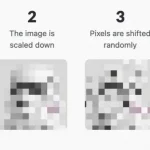What is the browser
What is the browser To begin with, let's try to understand, according to definitions, what a browser is and what it is used for. In computer science, the Web browser , better known only by the name of browser (pronounced bràuser ), is a software

You are not a great expert in terms of new technologies, on the contrary you are completely fast on the matter, this must be said, however if you are now here, on my site, it is because you intend to remedy the thing by expanding your knowledge about the world. of IT. In this regard, you have well thought of starting from the basics, to deepen your notions about what is practically the essential tool for surfing the Internet: the browser .
Yes, but ... exactly what is it, what is it for and how is it used? Well, if you like and if you allow me a few minutes of your precious free time, I can explain to you, in a simple but detailed way, what the browser is . In fact, with this tutorial today I will try to dispel all your doubts about it by not only answering the above questions but also going to illustrate those that in my opinion represent the best solutions in the category. In the end you will see, you will no longer even have a doubt about it.
Then? Would you like to put the gossip aside and get to the heart of the matter? Yup? Great! So let's not waste any more time and immediately start getting busy. Make yourself comfortable in front of your trusty computer (or grab your smartphone or tablet, if you don't have a PC at hand) and focus on the information you find below. I wish you, as usual, a good read.
What is the browser
To begin with, let's try to understand, according to definitions, what a browser is and what it is used for. In computer science, the Web browser , better known only by the name of browser (pronounced bràuser ), is a software - just like any other program installed on the computer - specifically designed to be able to retrieve , present and browse certain resources on the Internet. for example, texts, videos, songs, images and various other types of content that are identified through a specific URL (e.g. www.nomesito.it). In a nutshell, it is that "thing" that allows you to consult this or that page of Internet sites on the Web as well as interact with them.
To give some more practical examples, you can therefore use the browser to view the sites of your favorite newspapers, blogs, recipe portals, to consult Google or another search engine to find information, to access Facebook or others. social networks, to shop online on Amazon or other similar sites and so on.
I'm sure that now, to your question about what the PC browser is, everything is clear to you. If you are wondering what the mobile web browser is , you should know that it is the same thing: in essence, instead of having the classic executable available to download and install, you will have an app available, usually downloadable from the store smartphone or tablet default.
We are therefore still talking about software used for the same purpose. In both cases, in fact, there are no substantial differences, the operation remains practically the same regardless of the device used. What changes is, for obvious reasons, the mode of interaction (as I will explain in detail in the next step).
Some browsers are already available "standard" on computers, smartphones and tablets, many others can be downloaded at will. For example, Internet Explorer and Edge are pre -installed on Windows operating systems (only starting from Windows 10), on Mac computers there is Safari , on Linux there is Firefox , on Android devices often there is Chrome , while on iOS there is Safari , the version for iPhone and iPad of the aforementioned Internet browser for Apple computers.
To be able to take advantage of the browser to surf the Web, however, it is not enough to have only the program in question installed on your computer, mobile phone or tablet but you must also have an active and working Internet connection provided by one of the many providers for the fixed line ( for example by choosing one of the solutions proposed in my guide on the subject ) or, again, a data connection - the one generated by the SIM, so to speak - provided by one of the various operators for mobile telephony (as in the case of the ad hoc solutions of I told you about in this other article of mine ).
It should also be noted that although browsers are primarily intended for use of the Web, they can also be used for other very different purposes , such as accessing information provided by Web servers on a local network or viewing files in a file system.
How to use the browser
Now that you have a much clearer idea of what a browser is, it is my intention to let you know how to use it. Regardless of whether you decide to use Chrome, Firefox or other, the functioning of the web browser is practically always the same and everything is manageable from the program window. Let's see in detail how the latter is composed and how the various sections, commands, functions and options available are used.
- Menu bar - Located at the top of the browser window. Allows you to access the settings, functions and options of the web browser (e.g. history, bookmarks, display mode, etc.) as well as its main commands, some of which can also be called up on the fly by right clicking the program icon on the taskbar (on Windows) and on the Dock (on Mac).
- Toolbar - It is located immediately below the menu bar and allows you to access the main buttons and commands to manage online browsing: there is the button to display the home page, the one to reload the page, the one to open new tabs, the arrows to go back and forth between the pages already displayed, the buttons relating to any extensions installed, etc.
- Address Bar - Takes up part of the toolbar. It is practically that section where the URL of the visited page is displayed and where you can enter new web addresses to be able to visit them. It also allows you to search on the net without having to call up the Google home page or other search engine and offers quick suggestions on the searches to be carried out and on the pages already visited.
- Search box - When present (in the most modern browsers the function is almost always attached directly to the address bar), it is located next to the address bar and allows you to search online without having to call up the home page of your favorite search engine.
- Section dedicated to open tabs - It is located immediately below the address bar or just above (depends on the browser in use). It is practically that part of the Web browser window through which it is possible to open new tabs by clicking on the appropriate button or in any case by calling the appropriate function and which groups all the various tabs already open allowing you to quickly switch between one and the other. other simply by selecting the title.
- Contextual menu - It can be called up by right clicking on an empty spot on any Internet page, on a link or, again, after selecting a given element. It allows quick access to some additional functions (some of which are also implemented by any installed extensions) such as the command to print the page, the one to define a given term, the one to open a specific link directly in a new tab, the one for save an image displayed on the network etc.
To visit any Internet site, simply type its URL in the address bar and press the Enter key on the computer keyboard to view it immediately. All other miscellaneous and possible operations that can then be carried out are easily deductible taking into account the above information.
As anticipated a few lines above, the browser can also be used on mobile devices, smartphones or tablets. Its operation is practically identical to that of the desktop variant and the screen of the same is composed for good or bad in the same way as the computer counterpart.
The only thing that fundamentally changes is the fact that, instead of "clicking" with the mouse, you need to "tap" your fingers on the screen. Furthermore, the functions that can generally be called up by right-clicking are in this case accessible after a long press on the reference element.
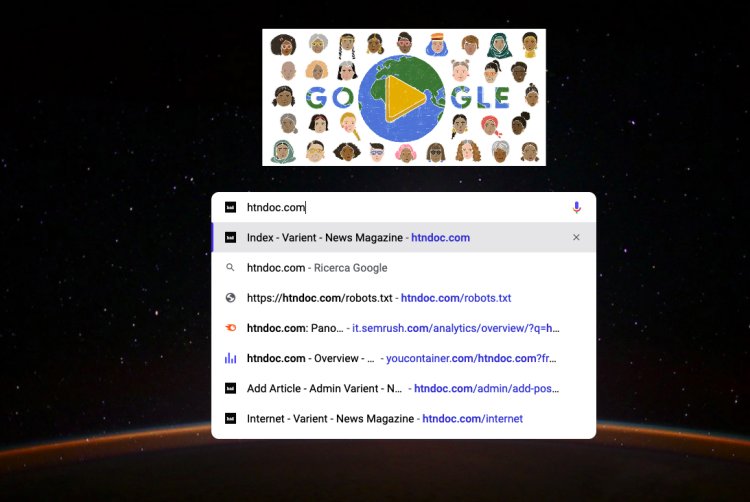
Recommended browsers
In addition to explaining what the browser is, I also want to suggest those that in my opinion represent the best programs ever to surf the Internet. You will find them indicated below with their detailed description.
Microsoft Edge
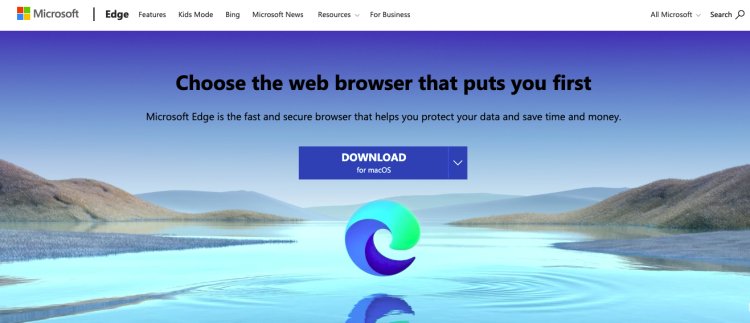
Microsoft Edge is the browser available as standard on Windows 10 (even if in reality Internet Explorer continues to be present in a "hidden" way on the operating system) and in the current state of things it is available for download starting from Windows 7 and later versions and on macOS 10.12 and later . It is very light, fast and meets all the latest web standards.
It is also able to ensure a fairly low energy consumption and manages to work well enough even on less powerful computers. It supports downloadable extensions from your own store or from the Chrome Web Store .
There is also a smartphone and tablet version of Edge that allows you to synchronize browsing data between PC and mobile devices. You can therefore download it both on Android terminals and on iPhone / iPad .
For further information you can take a look at my article on the best browsers for Windows 10 through which I proceeded to talk to you in more detail about this web browser.

Google Chrome is practically the most used web browser in the world and one of the most complete ever. It's free and is perfectly compatible with Windows, Mac and Linux.
It is very fast in the start-up phase and loads Internet pages practically lightning-fast, it can be customized at will thanks to the many available extensions, it updates automatically and "silently" and supports all the latest Web standards. that being a Google product it interfaces and integrates perfectly with all the other products of the company.
It is also available in a mobile version, for Android and for iOS / iPadOS , and in terms of speed and ease of use, it has the same characteristics as the desktop counterpart.
For more information, I suggest you read my guide on how to install Google Chrome .
Mozilla Firefox
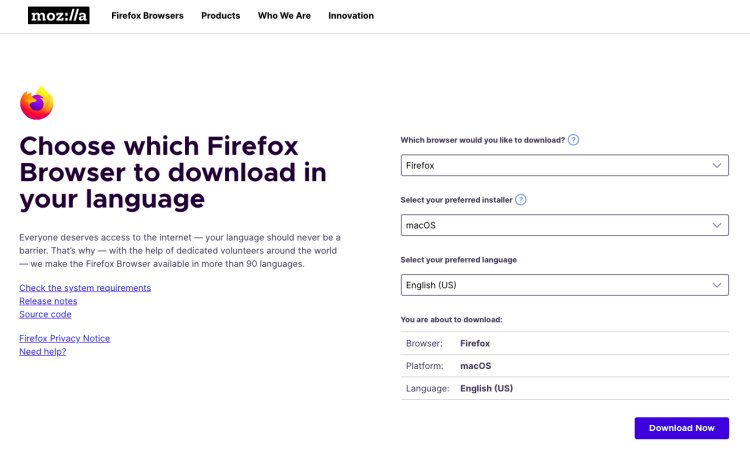
Mozilla Firefox is another web browser on the market that I highly recommend you try. This is a free, open source solution that works on Windows, Mac and Linux. It integrates an online data synchronization system and an automatic update system that allows you to always have the latest version of the program installed on your computer.
It offers good performance in terms of speed as regards the start-up phase and that of page loading (even if slightly lower than Chrome) and does not particularly burden hardware resources. Even in this case, the operation of the program can be customized thanks to the installation of special add-ons.
It is also available in a mobile version, for Android and for iOS / iPadOS , with almost the same functions and as the desktop variant. For more information, you can read my article on how to download and use Mozilla Firefox .
Apple Safari
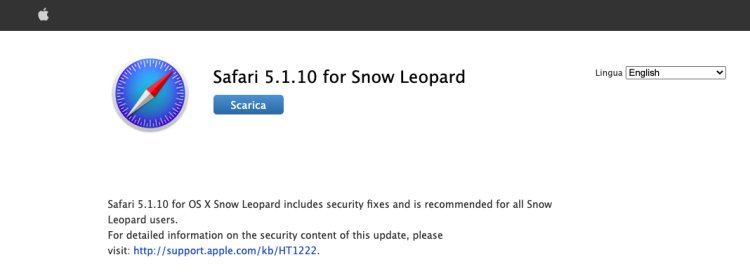
As I anticipated a few lines above, Safari is instead the default web browser of Apple-branded computers and most likely also the best that can be used on Macs. It is very fast, has decidedly reduced energy consumption and includes various and interesting functions: reading list, simplification of web pages, support for extensions, AirPlay, modification of the user agent, synchronization of navigation data via iCloud and much more.
As for the extension discourse, unfortunately the assortment is not as vast as for the browsers already mentioned but all the main ones are still available. It should also be noted that its use is limited, as things currently stand, only to the operating systems of the "bitten apple".
It can also be used on iOS, both on the iPhone and on the Pad, with which it shares almost all of the typical features of the desktop version. If you want some more info about how Safari works, I suggest you read my guides on how to update Safari , how to delete Safari history and how to restore Safari .
What is the default browser
If you are wondering what the default browser is , you must know that it is the software (or the app in the case of smartphones and tablets) that the operating system must start by default (i.e. without asking you anything) when you want to browse the Web or open a URL or any link received.
Of course, if only one web browser is installed on your computer or mobile device, only that one will be used as the default. If, on the other hand, you have multiple browsers installed, you may have a preference for the cases mentioned above. In this regard, I recommend reading my guide on how to change your default browser , so as not to have any problems whatsoever in performing this operation.
What is the Tor browser
Have you heard of Tor but have no idea what it is? To put it very briefly, Tor is a mechanism that allows you to anonymize a network communication by "bouncing" the connection between different nodes (ie different computers distributed around the world) on which the connection is routed.
Therefore, the Tor browser is nothing more than a web browsing software that protects a user's anonymity. However, if you want to know more about how to download this browser and, in general, you also want to learn more about the functioning of the Tor network, I suggest you consult my tutorial dedicated to the subject.











